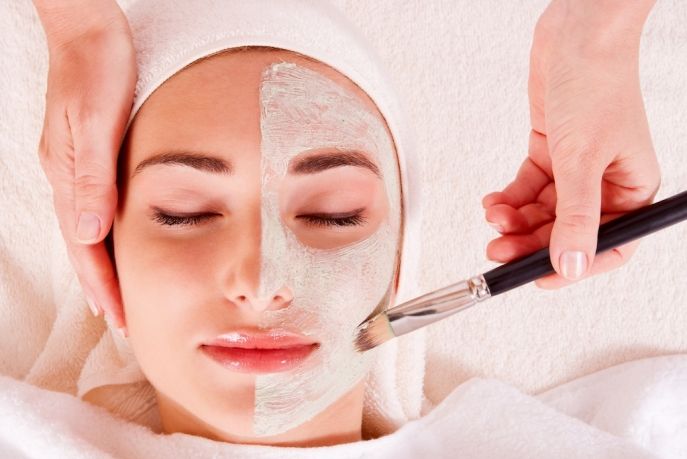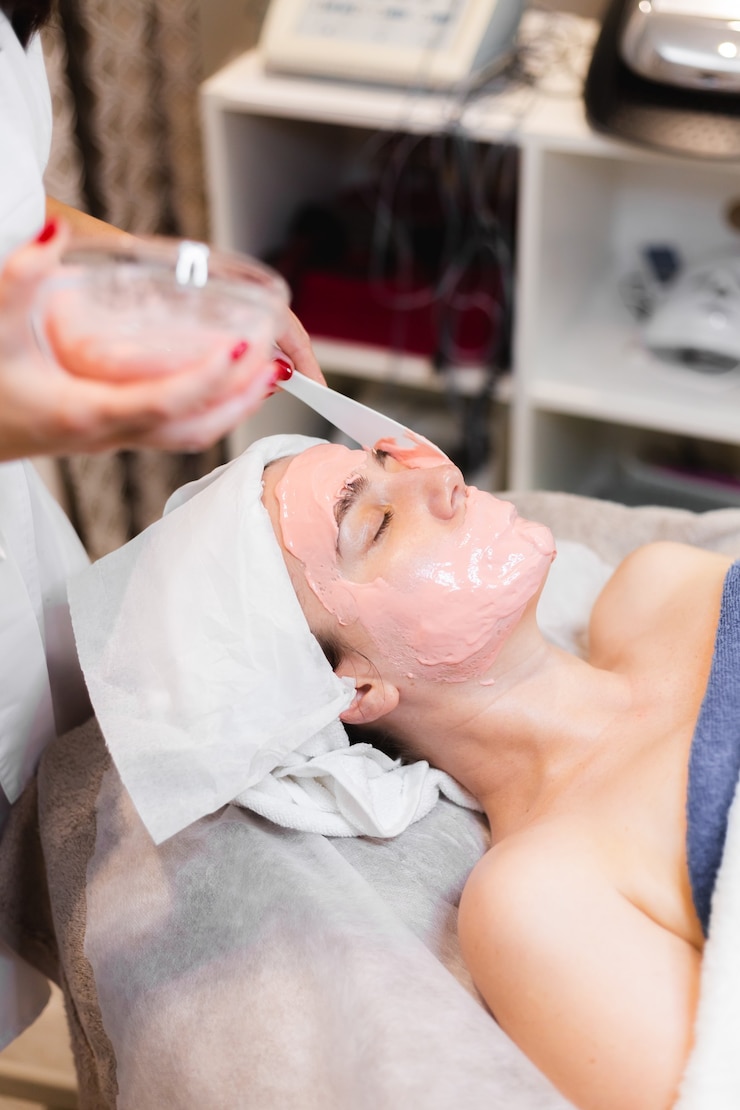Chemical peels are a skin treatment that involves the application of a chemical solution to the skin, which promotes the exfoliation of the top layers. This process encourages cell turnover, revealing fresh, rejuvenated skin underneath. Chemical peels can vary in intensity and target different layers of the skin depending on the specific formulation and concentration used. Here’s a closer look at the steps and mechanisms involved in Chemical Peels in Dubai.
1. Application of the Chemical Solution
During a chemical peel, a trained professional applies a chemical solution to the skin using a brush, gauze, or cotton applicator. The type and concentration of the solution vary based on the desired results, as well as the client’s skin type and concerns. The solution is applied evenly and left on the skin for a designated amount of time, allowing it to penetrate and begin the exfoliation process.
Types of Acids Used in Chemical Peels
The effectiveness of a chemical peel depends largely on the type of acid used. Common acids in peels include:
- Alpha Hydroxy Acids (AHAs) – Glycolic acid, lactic acid, and mandelic acid are mild exfoliants, ideal for treating surface-level skin concerns, such as mild pigmentation and fine lines.
- Beta Hydroxy Acid (BHA) – Salicylic acid is oil-soluble, making it effective for oily or acne-prone skin, as it penetrates pores and removes excess oil.
- Trichloroacetic Acid (TCA) – This acid is often used in medium to deep peels, addressing more pronounced skin concerns, like deeper wrinkles, scars, and significant pigmentation issues.
- Phenol – A strong acid reserved for deep peels, typically used for extensive skin rejuvenation. Phenol can provide dramatic results but also requires a longer recovery period.
Each acid type has unique properties that determine how deeply it penetrates the skin, as well as the specific benefits it offers.

2. Penetration of the Skin’s Surface Layers
Once applied, the acid solution penetrates the outermost layer of the skin, known as the epidermis. Superficial peels may only affect the uppermost part of the epidermis, whereas medium and deep peels can reach deeper into the dermis layer. As the acid breaks down proteins that bind dead skin cells, it facilitates the shedding of old cells and debris from the skin’s surface.
The penetration level is what differentiates the various types of chemical peels:
- Superficial Peels – Affect only the epidermis and are suitable for mild skin concerns.
- Medium Peels – Penetrate into the upper dermis, targeting more visible signs of aging, pigmentation, and minor scarring.
- Deep Peels – Reach the lower dermis, addressing significant skin damage, deep wrinkles, and pronounced scars.
3. Exfoliation and Shedding of Dead Skin Cells
Following the application and penetration of the chemical solution, the skin begins a controlled shedding process. This process can range from mild flaking to more intense peeling, depending on the peel's strength. The shedding phase typically occurs over several days to a week after the treatment and reveals a layer of newer, healthier skin underneath. This exfoliation phase helps to smoothen the skin's texture, brighten the complexion, and diminish imperfections.
4. Stimulation of Collagen and Cell Renewal
Medium and deep chemical peels stimulate the skin’s natural healing process, which encourages collagen production and cell renewal. Collagen is a vital protein responsible for maintaining skin firmness, elasticity, and smoothness. By promoting collagen production, chemical peels can gradually improve the skin’s resilience, texture, and overall youthful appearance over time.
5. Healing and Regeneration
As the old, damaged skin peels away, the underlying skin layer begins to heal and regenerate. This process brings a fresh layer of skin to the surface, which often appears smoother, more even-toned, and more radiant. The healing time depends on the depth of the peel; superficial peels require minimal downtime, while medium to deep peels may need several days to weeks for full recovery. During this time, the skin is more sensitive and requires diligent sun protection and hydration.
Conclusion
Chemical peels work by applying a chemical solution to exfoliate and peel away the skin’s outer layers, promoting new cell growth and collagen production. By targeting various skin layers and addressing specific skin concerns, chemical peels provide a customized approach to skin rejuvenation. With consistent use, they can effectively improve the skin’s tone, texture, and overall health.





Comments